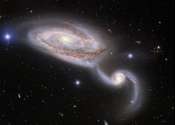Uranian moons in new light
More than 230 years ago astronomer William Herschel discovered the planet Uranus and two of its moons. Using the Herschel Space Observatory, a group of astronomers led by Örs H. Detre of the Max Planck Institute for Astronomy ...









